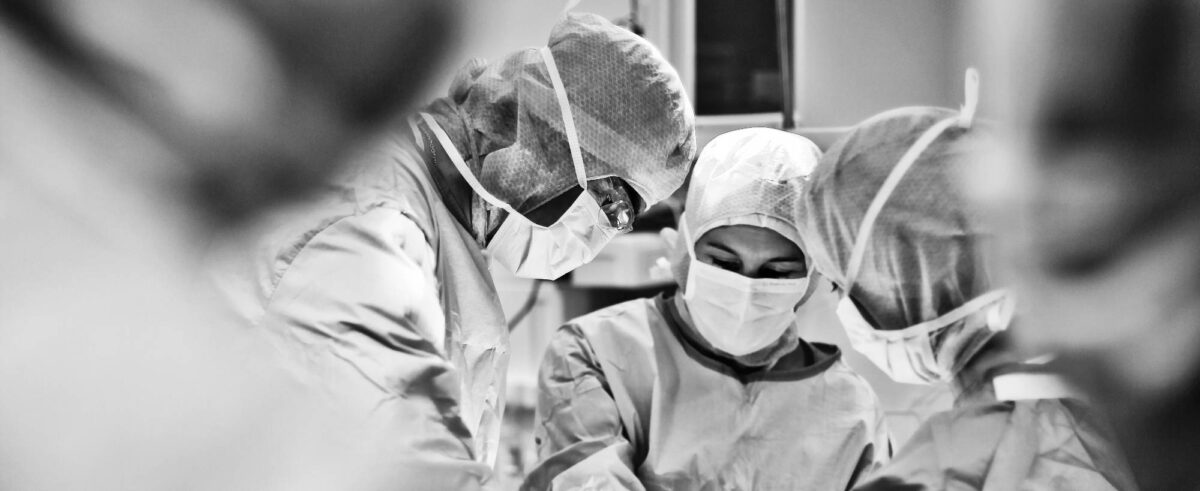Orthopaedic Operating Room Protocols and Recommendations during the COVID-19 Pandemic

As of June 2020, there are close to 10 million confirmed cases of COVID-19 worldwide, with the 25% of the infected residing in the United States1. While everyday life has changed radically due to the pandemic, the millions of trauma patients currently hospitalized in the US still require surgical care2. Several aspects of COVID-19 infection are still unclear, including its mode of transmission, the appropriate diagnostic criteria, and the safest management protocols. Now, more than ever, there is an urgent demand for innovative, evidence-based protective measures to reduce the occupational risk of those caring for COVID-19 patients especially given that thousands of health care providers have already been infected with COVID-193,4.
Acknowledging this gap in knowledge, Dr. Awad, et al. discusses orthopaedic operating room (OR) protocols and recommendations for the care of suspected and confirmed COVID-19 patients in order to reduce the risk of occupational transmission. Additionally, the 2020 article in the Journal of the American Academy of Orthopaedic Surgeons highlights promising measures that could be expanded to areas outside of the orthopaedic OR. Summarized below are some of the most prominent recommendations categorized by the stages of patient contact2:
- Before Patient Contact:
a. To minimize the risk of cross-infection, all healthcare workers should practice hand hygiene and frequently disinfect commonly-touched surfaces such as elevator buttons, door handles, hand-sanitizer dispensers, phones, etc.
b. Practice mandatory use of personal protective equipment (PPE) to reduce airborne droplet transmission:
i. If possible, use a close-fitted N95 mask with a simple surgical mask on top to prevent the gross contamination of the N95. Wearing a surgical mask on top of the N95 allows for optimization and reuse of PPE during a time where there is high global demand and shortage of PPE. Surgical masks alone are an option but even with the multiple mask technique, they do not provide complete protection from contaminants due to the loose facial fit. It is important to note that for long operations, a powered air purifying respirator (PAPR) should be used.
ii. Orthopaedic OR stakeholders should be individually assigned reusable eye protection equipment. The eye protection should cover the sides of the eye to eliminate viral exposure to the mucous membrane inside the eyelids as a mode of transmission 5,6.
iii. Wearing two pairs of gloves is recommended to minimize contamination when dealing with suspected or confirmed COVID-19 patients. The outer layer glove should be removed before touching surfaces beyond the OR.
iv. It is important to note that viral exposure to bodily surfaces like the head, torso, legs and feet are not known to result in direct transmission. Nevertheless, using other bodily protection such as wearing a surgical cap, surgical gown, and booties on fluid-resistant shoes is strongly recommended.
2. During Patient Contact:
a. Regardless of COVID-19 status, all patients should be required to wear a cloth face-covering or face mask, receive a pre-operative COVID-19 test, and be socially distanced 6 feet away from others.
b. For suspected or confirmed COVID-19 patients, there should be dedicated pre-operative, intra-operative, and post-operative spaces with separate ventilation systems. If possible, these spaces should be well-sealed negative-pressure rooms.
c. The workplace should separate orthopaedic staff members that treat COVID-19 patients and those who treat noninfective patients. Please note that this is more feasible in larger hospital systems.
3. After Patient Contact:
a. Once a patient is discharged or transferred, allow time to elapse before entering the room.
Thoroughly disinfect the space afterwards.
b. After surgery, orthopaedic staff should be more vigilant in differentiating postoperative complications from COVID-19 infections and should limit visitors as much as possible
c. With the rise of telemedicine, post-operative follow-up visits should be replaced with video conferencing appointments whenever possible. Studies have found that time and cost savings of these visits contributes to high patient satisfaction7.
Works Cited:
1.“COVID-19 Map.” Johns Hopkins Coronavirus Resource Center, 2020, coronavirus.jhu.edu/map.html.
2. Awad, Mohamed E., et al. “Perioperative Considerations in Urgent Surgical Care of Suspected and Confirmed COVID-19 Orthopaedic Patients: Operating Room Protocols and Recommendations in the Current COVID-19 Pandemic.” Journal of the American Academy of Orthopaedic Surgeons, vol. 28, no. 11, 2020, pp. 451–463., doi:10.5435/jaaos-d-20-00227.
3. Wang D, Hu B, Hu C, et al: Clinical characteristics of 138 hospitalized patients with 2019 novel coronavirus-infected pneumonia in Wuhan, China. JAMA 2020; 323:1061-1069.
4. Bai Y, Yao L, Wei T, et al: Presumed asymptomatic carrier transmission of COVID-19 [published online ahead of print February 21, 2020]. JAMA doi: 10.1001/ jama.2020.2565.
5. Chang D, Xu H, Rebaza A, Sharma L, Dela Cruz CS: Protecting health-care workers from subclinical coronavirus infection. Lancet Respir Med 2020; 8:e13.
6. Li JPO, Lam DSC, Chen Y, Ting DSW: Novel Coronavirus disease 2019 (COVID- 19): The importance of recognizing possible early ocular manifestation and using protective eyewear. Br J Ophthalmol 2020; 104:297-298.
7. Williams AM, Bhatti UF, Alam HB, Nikolian VC: The role of telemedicine in postoperative care. Mhealth 2018; 4:11.
